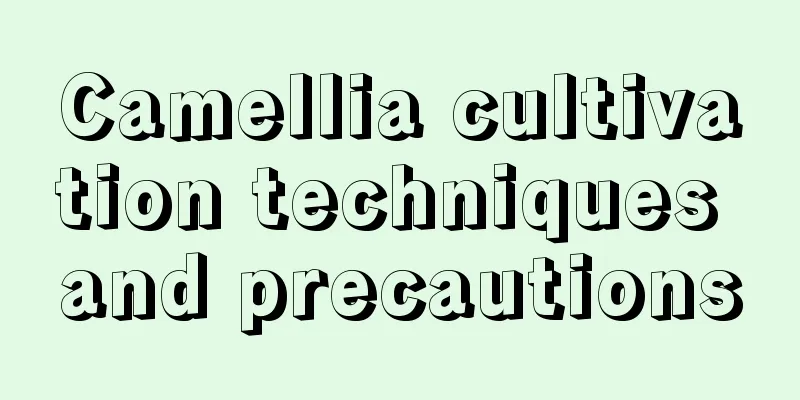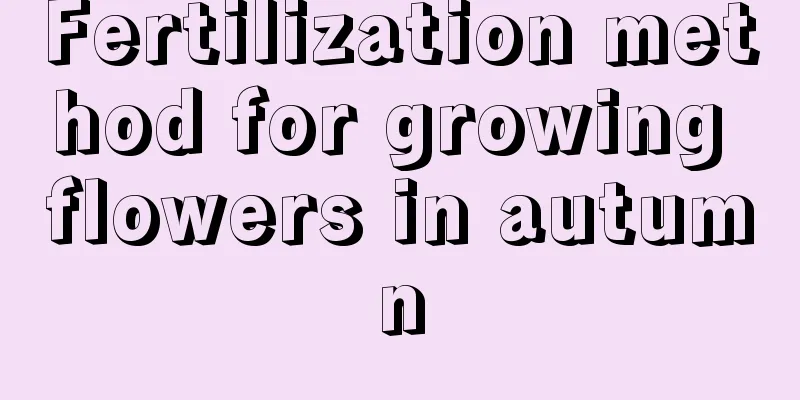Camellia cultivation techniques and precautions

|
Camellia is a very popular ornamental flower known for its showy flowers and evergreen leaves. However, many flower lovers are not good at growing camellia, because there are many things to pay attention to in growing camellia . So what tips and precautions do you need to pay attention to when growing camellia to ensure its healthy growth and flowering. Let’s learn together below. 1. Breeding techniques 1. Lighting management Camellia prefers a semi-shaded environment and avoids direct sunlight. In spring and autumn, it can be placed in a place with sufficient scattered light. In summer, it needs to be shaded to avoid direct sunlight, otherwise it will cause leaf burns. In winter, you can increase the light appropriately, but avoid prolonged exposure to cold direct light. 2. Temperature control The suitable temperature range for camellia growth is 15℃-25℃, and the temperature in winter should not be lower than 5℃, otherwise frostbite may occur. During the high temperatures in summer, cooling measures need to be taken, such as spraying water and ventilation, to avoid the temperature exceeding 30℃. 3. Soil selection Camellia has high requirements for soil and needs to choose loose, fertile, well-drained slightly acidic soil (pH between 5.5-6.5). You can mix leaf mold, garden soil and river sand in a ratio of 3:2:1, or you can add a small amount of decomposed organic fertilizer . 4. Watering management Camellia likes moisture, but avoids waterlogging. Watering should follow the principle of "water when dry and water when wet", that is, water after the soil surface is dry, and water thoroughly to ensure that the water can penetrate to the roots. In summer, when the temperature is high, you need to increase the frequency of watering, and in winter, reduce watering and just keep the soil slightly moist. 5. Fertilization method Camellia needs to be fertilized regularly during its vigorous growth period. Generally, a thin liquid fertilizer is applied once a month, such as decomposed bean cake water or special flower fertilizer. During the bud stage, additional phosphorus and potassium fertilizers can be applied to promote bud development and flower opening. 6. Pruning and shaping Camellia grows fast and needs regular pruning to maintain a good plant shape and ventilation and light. When pruning, you can remove diseased and weak branches, overcrowded branches and overgrown branches to promote the healthy growth of the plant. 7. Reproduction Method Cutting propagation: Cuttings are carried out in May-June or September-October. Select semi-lignified branches of the current year, cut them into 10-15 cm long cuttings, insert them into loose substrate, keep moist, and they will take root in about 40-50 days. Grafting propagation: commonly used for the propagation of excellent varieties. The grafting time is generally in early spring or autumn. Choose healthy plants as rootstocks and use cutting grafting or approach grafting. 2. Precautions 1. Avoid stagnant water Camellia roots are afraid of waterlogging, and long-term waterlogging will cause root rot. Therefore, when watering, make sure the soil drains well to avoid water accumulation in the pot. 2. Pay attention to ventilation Camellia needs a well-ventilated environment, especially when grown indoors in the hot summer and winter, air circulation must be maintained to avoid the breeding of diseases and pests. 3. Prevent and control pests and diseases Common diseases and pests of camellia include leaf spot, anthracnose, aphids, red spiders, etc. Check the plants regularly and deal with diseases and pests in a timely manner if found. You can use appropriate pesticides for prevention and control. 4. Change the pot at the right time Camellia generally needs to be repotted every 2-3 years. When repotting, you can trim the old roots and replace the new culture soil to promote the healthy growth of the plant. In short, camellia has a long flowering period, and it is necessary to maintain sufficient light and appropriate humidity during the flowering period. At the same time, avoid moving the plant frequently to avoid affecting the opening of the flowers. When the temperature is low in winter, camellia needs to be moved indoors or to a greenhouse to keep warm and avoid frostbite. When raising indoors, it is necessary to maintain a certain humidity to prevent the air from being too dry.
|
<<: Cultivation techniques and precautions for daffodils
>>: Cultivation techniques and precautions for Christmas cactus
Recommend
Saffron planting conditions, regions and methods
1. Planting conditions When planting, you should ...
How to care for the newly bought hanging bamboo plum
1. Soil It does not have high requirements for so...
How to make a home bonsai with elm seedlings (how to grow a bonsai with a small elm seedling)
The production process of elm bonsai can be rough...
What's up with the dried leaves of petunia?
1. Unsuitable soil 1. Reason: If the soil used is...
The legend of lotus
The legend of lotus on March 3 Once upon a time, ...
When and in which month are peanuts harvested in Northeast China?
Northeast Peanut Harvest Time Northeast peanuts r...
The causes and solutions of yellowing leaves of bougainvillea
Improper watering Bougainvillea has different wat...
Taboos on growing gerbera in winter
The temperature should not be too low It is not a...
When does hibiscus bloom?
When does hibiscus flower bloom? The flowering pe...
How to raise a dragon
1. Breeding environment (1) Soil: The main requir...
Where is Wisteria suitable for planting?
Where Wisteria is planted Wisteria generally grow...
Disease control of alpine banyan
Direct disease control Most of the diseases of al...
The peony is gorgeous, but it never blooms. Check if there is something wrong with the watering.
We all know that Chinese literati have had a spec...
How long is the growth cycle of pine?
Pine growth cycle Depending on the growing enviro...
Famous rapeseed flower viewing spots in China
China's famous rapeseed flower viewing spots ...









